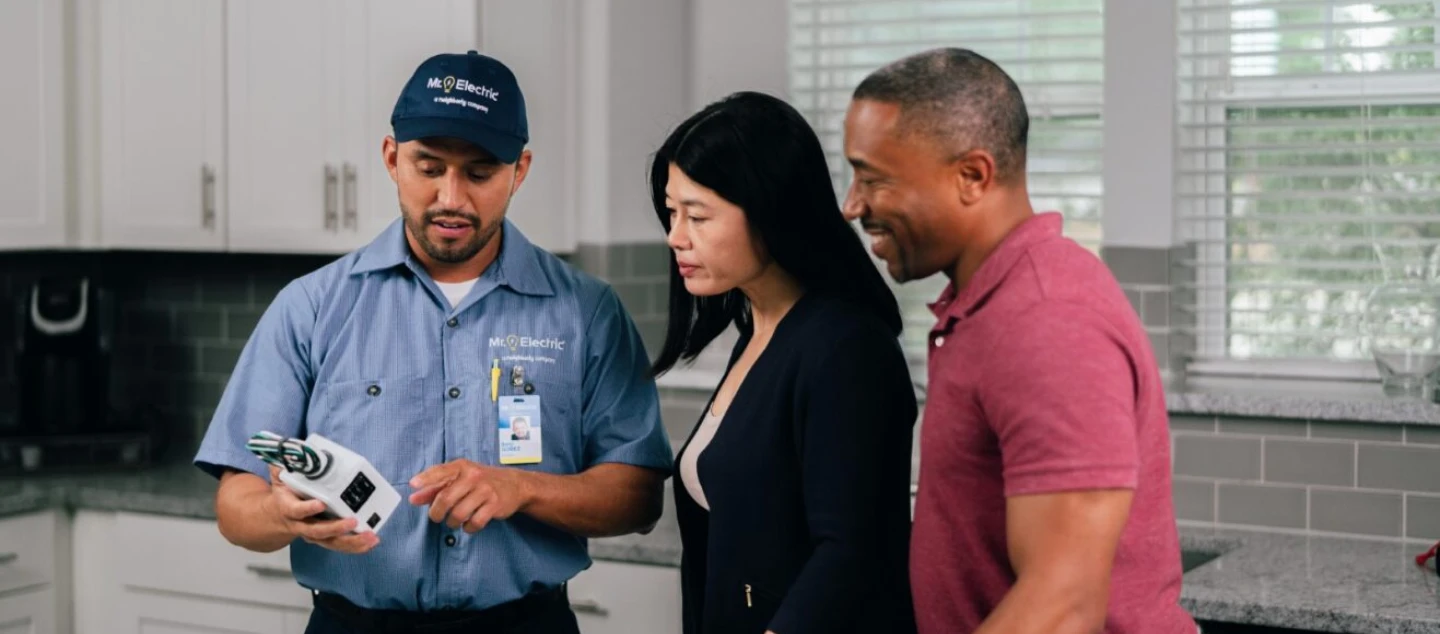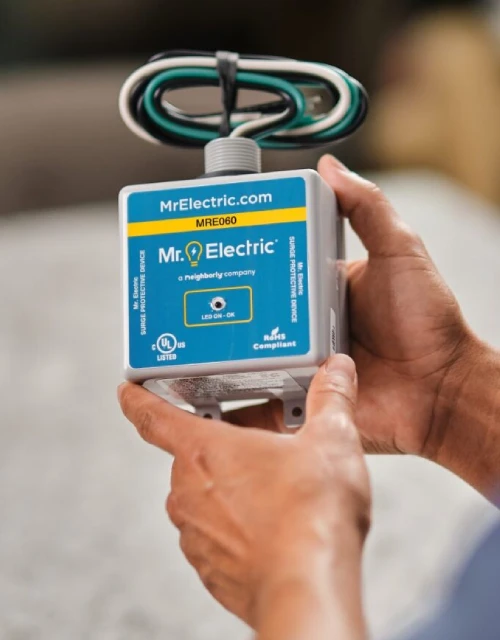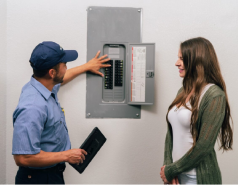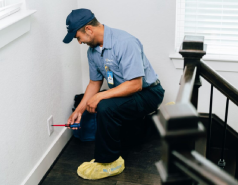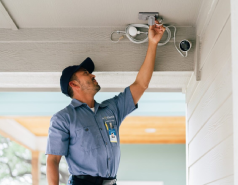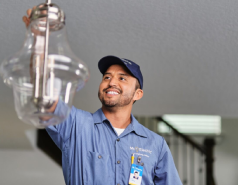Electricity powers your home, but small and large power surges can threaten your electronics, appliances, and wiring. Protecting your home with a reliable surge protection system ensures safety and efficiency.
Whole home surge protection safeguards your home from daily voltage fluctuations and unexpected power surges. With today’s technology-packed homes, even minor surges can wear down electronics over time. A professionally installed home surge protector helps prevent damage, extending the lifespan of your appliances and reducing costly repairs.
At Mr. Electric of Huntsville, we provide customized surge protector installation tailored to your home’s electrical needs. Our highly trained and certified professionals ensure a safe and efficient installation process, prioritizing clear communication and guaranteed service. Proactive surge protection gives you peace of mind, lower long-term maintenance costs, and enhanced safety.
Discover how whole home surge protection can safeguard your home. Learn more about the risks of power surges and find the best surge protectors for homes today.
